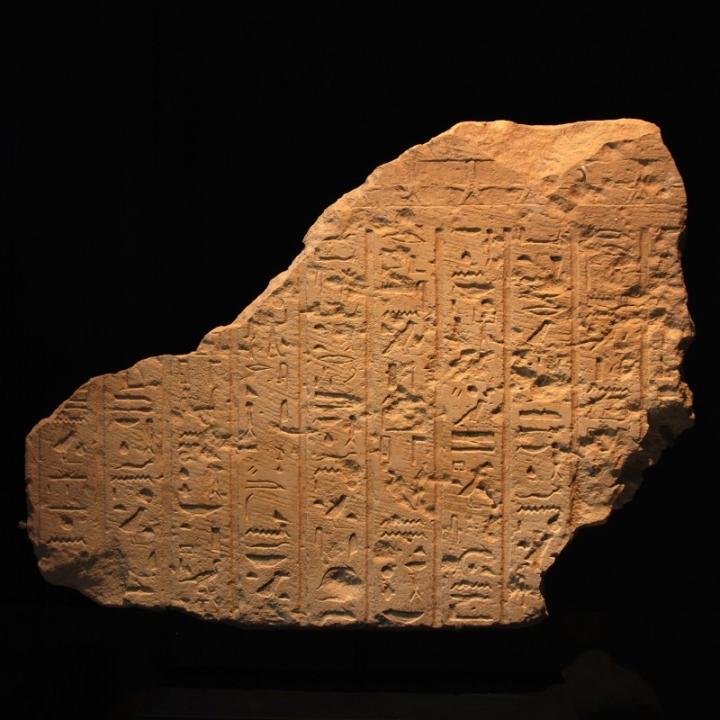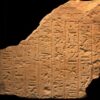Wall Fragment from the Tomb of Wah-ib-Ra-neb-achet with the Litany of Re
Culture: Egyptian
Period: Late Period, 26th dynasty, 664-525 B.C.
Material: Limestone
Dimensions: 62.5 cm x 47.5 cm
Price: Sold
Ref: 1210
Provenance: US private collection prior to 1948, since in a family estate.
Condition: Fragment of high quality.
Description: Very important, large limestone slab, which probably was found in Heracleopolis Magna as a wall decoration in a tomb of a high ranking official of the 26th dynasty. Preserved are ten text columns with hieroglyphs, to be read from right to left, separated by vertical lines. The text is about the so-called Litany of Re, which decorated as of the 18th dynasty mainly royal tombs. As of the 26th dynasty the sun litany was also integrated in the text programme of tombs for high ranking officials and priests respectively. The present stone slab is especially a stroke of luck because the inscription represents the part of the so-called “Great Litany”. In the Late Period this part is verified in fragments only two times so far. Mentioned is Wah-ib-Ra-neb-ahet as the owner, who is described as “one, who organizes the ridge and furrow” and as “the temple scribe of Heracleopolis” respectively. More objects from the tomb of this high ranking official are not known so far. The importance of the relief fragment lies in the high quality execution of the hieroglyphs and its good preservation, but especially in the content of the text. It is just the third proof for the “Great Litany of Re” from the Late Period and shows how it was amended for a private person. After all, the tomb owner's name and his titles provide an important source for the research of the social structure of the Late Period. With a detailed translation and description by the Munich Egyptologist Dr. Edith Bernhauer. Mounted.





